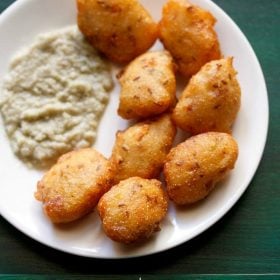Appe Recipe | Paddu (Traditional Recipe)
It is true that the versatility of a rice-lentil batter, typical of South Indian cuisine, can be used to create a variety of dishes that are not just delicious but nutritious too. One such recipe is that of Appe, a popular breakfast choice. This one, also known as Paddu, are small, fluffy dumplings or pancakes made with a fermented rice and lentil batter, traditionally cooked in a special Appe pan with multiple round moulds in it. You can customize this vegan recipe by adding other ingredients like vegetables, spices and even make a sweet version of it.
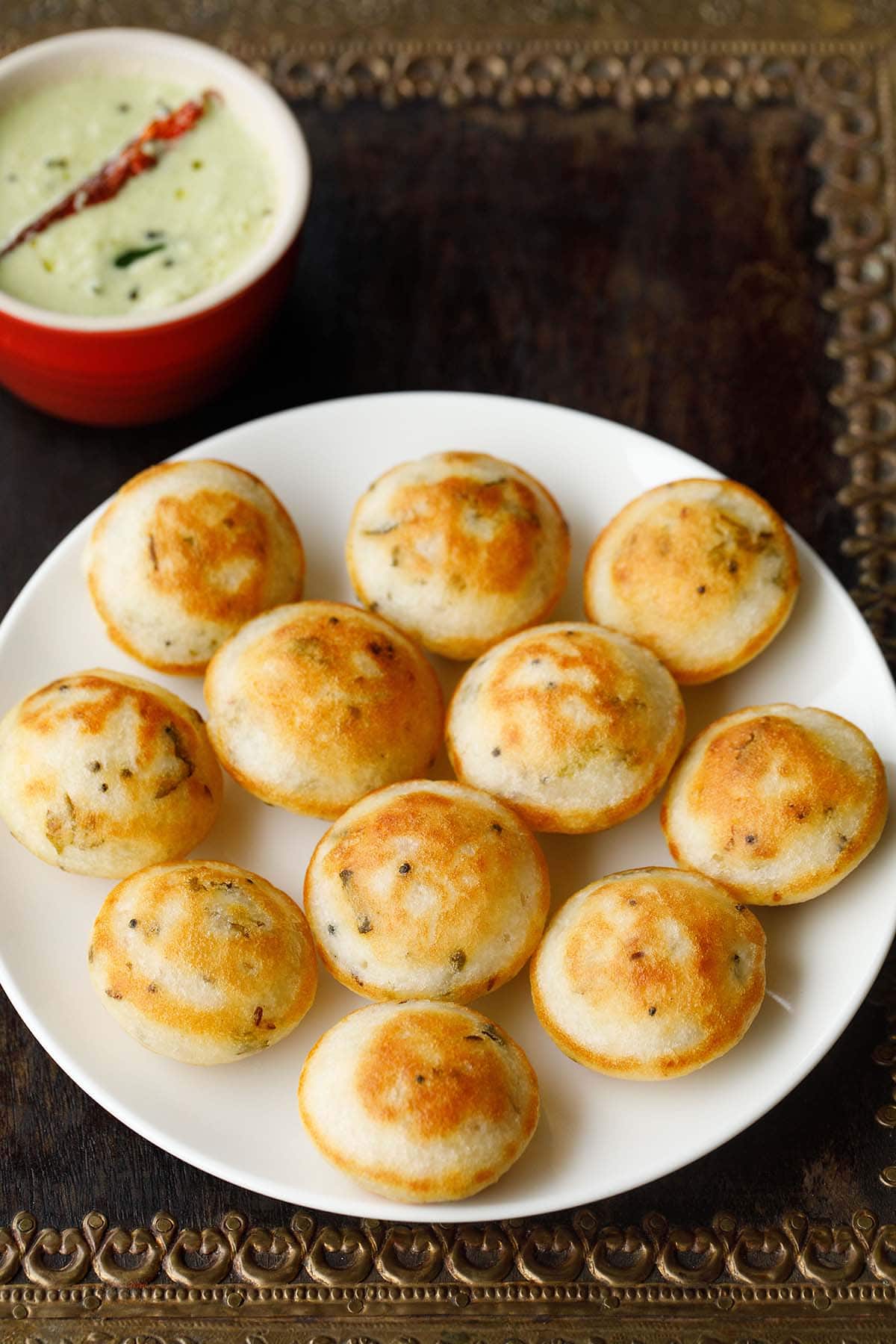
What is Appe
As I mentioned in the beginning, Appe is a classic South Indian as well as Maharashtrian breakfast snack dish that are mini spongy, slightly crispy roundels or dumplings made of a perfectly fermented rice and lentil batter. It is also a street food in these parts of the country.
What makes this dish more distinctive is the use of a unique pan called paniyaram or Appe pan in which it is made. It is similar to the Aebleskiver pan used to make Danish Pancakes.
To make appe, you can use either cast iron appe pan or the non-stick ones. The cast iron pan are better to use as they retain heat. Due to which the appe gets a nice crispy texture from outside. But you do have to reduce the heat and control it as required, while cooking appe.
Another name of this dish is Paddu (mostly referred to as in Karnataka), which is usually savory in taste. Some of its other sobriquets include paniyaram in Tamil Nadu and Kerala, guliyappa also in Karnataka and ponganalu in Andhra Pradesh.
All these may have little to no differences in their recipes as per individual choices and regional preferences.
The main ingredients for Appe are rice and urad dal (black gram) and other lentils, which are soaked and ground into a batter.
It is then is mixed with salt and allowed to ferment for several hours or overnight to develop a slightly sour taste and make it light and fluffy. Sometimes, a bit of fenugreek seeds (methi dana) is also added to enhance the fermentation process.
About Appe Recipe
In this post, I have shared a classic way of preparing a savory version of the Paddu recipe with rice and a mix of three lentils. You can just add one lentil as well, which is urad dal.
But usually, the traditional versions have mixed lentils. Though I use idli rice, you are free to use regular rice or parboiled rice. This also makes this snack protein-rich and healthy.
I also add a mix of tempered spices and sautéed onions to the Appe batter. This variant is also called Masala Appe or Masala Paddu.
However, again, you can opt to give it a miss or simply add raw onions paired with cumin seeds, crushed black pepper, asafoetida (hing), ginger, coriander leaves and curry leaves to the batter.
For a variation, other ingredients like grated coconut or grated vegetables can also be added.
In case you have some Idli Batter, then you can also use it to make Paddu. It will be the way I make my Paniyaram. Like I said, you are free to add one or only 2 lentils in the batter.
But I would always say, the more, the better and wholesome. Also, keep in mind that the flavor will alter with the kind of lentils used in this recipe.
An authentic Appe recipe is always prepared with a fermented batter of rice and various lentils. But there are many other versions of the traditionally prepared Paddu as well.
For instance, the recipes of quick and instant ones made with rava or suji. However, I always am biased towards the version made with a fermented batter.
Step-by-Step Guide
How to make Appe
Soak Rice and Lentils
1. Take 3 tablespoons urad dal, 2 tablespoons moong dal and 2 tablespoons chana dal in a bowl.

2. Take 1 cup idli rice or regular rice in another bowl.
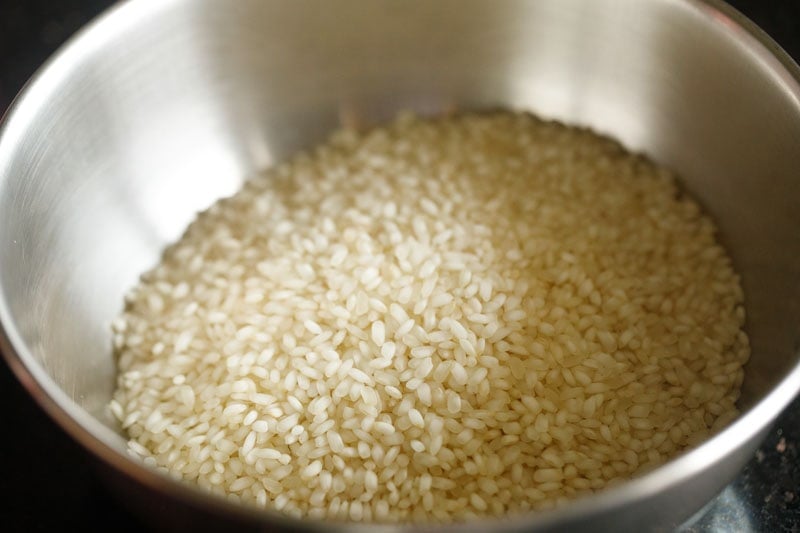
3. Rinse the lentils 3 to 4 times with water in the same bowl, using a colander or strainer. Add ½ cup water to the rinsed lentils and soak for 4 hours, covering with a lid.

4. Similarly, rinse the rice 3 to 4 times with water. Add 2 cups water and soak for 4 hours, covering the bowl with a lid.

Make Batter
5. Drain all the water from the lentils and add to a blender or mixer-grinder.

6. Grind or blend to a fine medium-thick to medium consistency, adding ¼ cup water or as needed. Transfer to a bowl or pan.

7. Next, drain all the water from the soaked rice. Rinse ¼ cup thick poha in water a few times.

8. Add both the rice and poha to the blender or grinder.
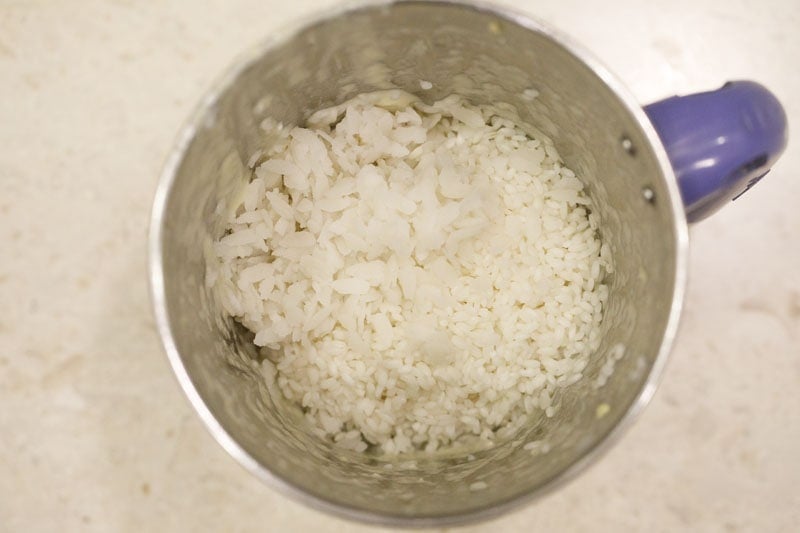
9. Add ½ cup water and grind or blend the soaked rice grains to a fine grainy batter or to a smooth fine batter.
If you have used regular raw rice, you will need less water while grinding to make the batter.

10. Transfer the rice and poha batter to the same bowl or pan containing the lentil batter. Add ½ teaspoon edible rock salt. You can also add sea salt.
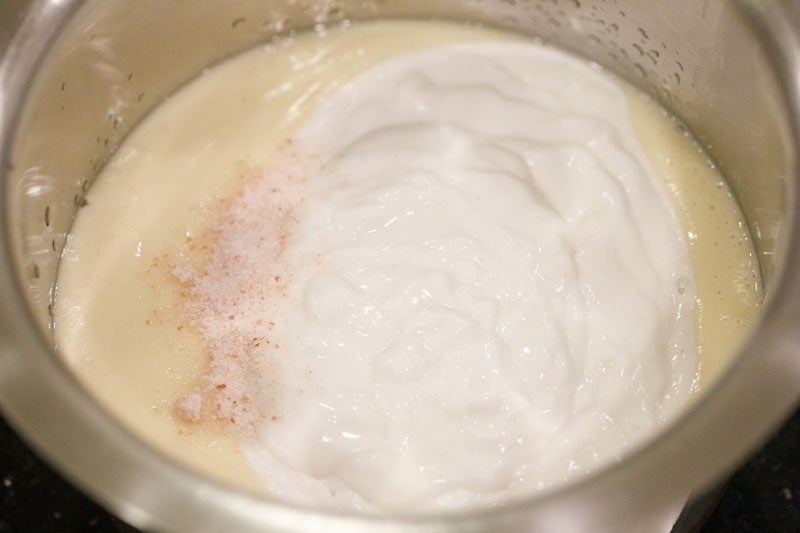
11. Mix both the batters thoroughly. Cover with lid and let the batter ferment for 8 to 9 hours or more as needed.
Keep in mind that the time required for the batter to ferment will depend on the room temperature.

12. After the fermentation is complete, the batter will double in volume. Now you can start making the appe. If not, then keep the batter in the fridge.
The tempering is optional, you can skip adding it and straightaway make Appe with the fermented batter.

Make Tempering
13. Heat 1 tablespoon oil in a small frying pan or a wok. Keep heat to medium low. Add ½ teaspoon mustard seeds and let them splutter.
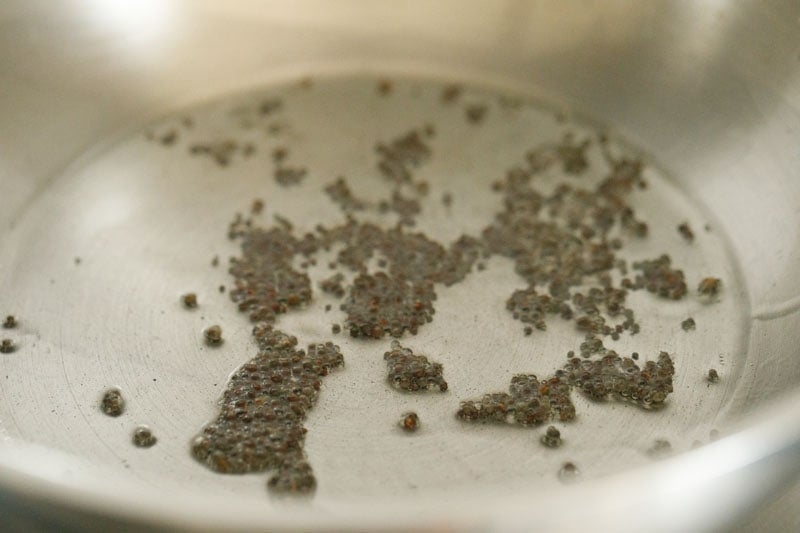
14. Next, add ½ teaspoon cumin seeds and let them crackle.
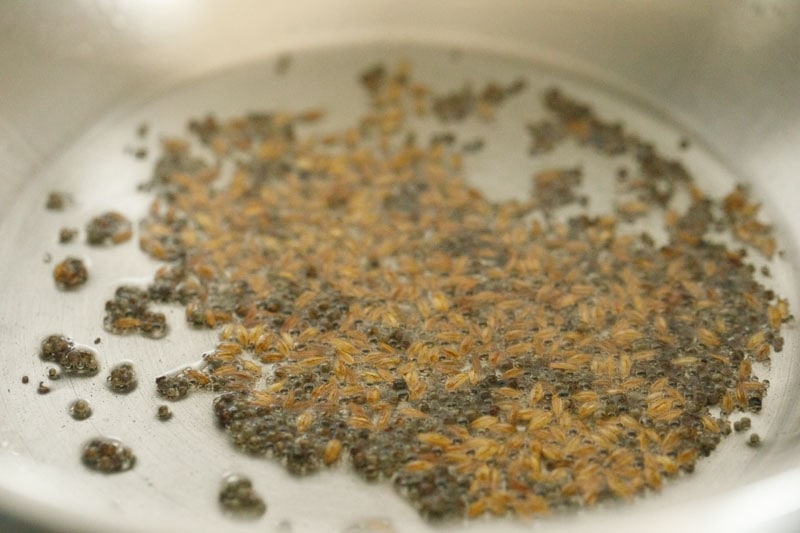
15. Add ½ cup finely chopped onions, 1 teaspoon finely chopped green chilies, 1 tablespoon chopped curry leaves and 1 pinch asafoetida (hing).
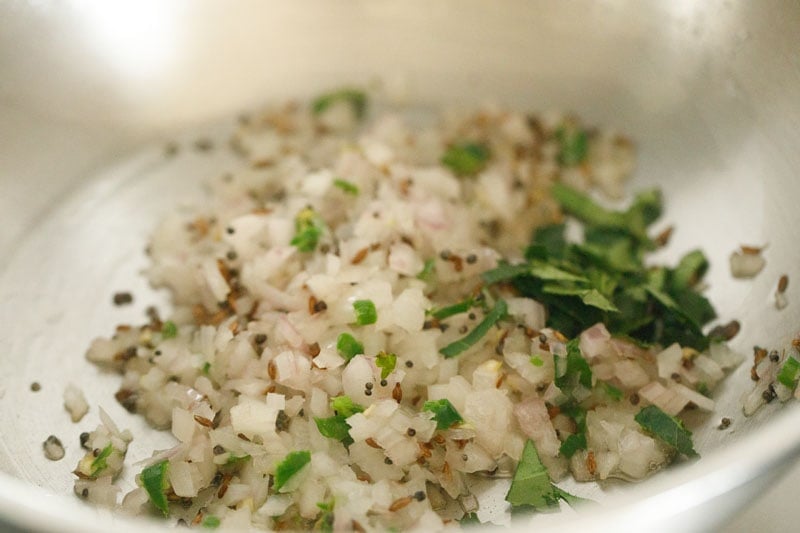
16. Mix and sauté till the onions soften. Or else you can sauté the onions for 2 to 3 minutes.
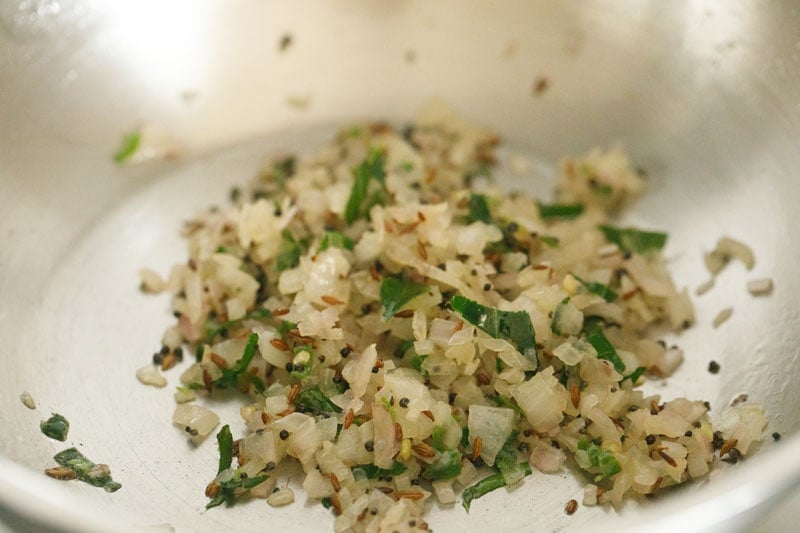
17. When the onions have softened, add the tempering to the fermented batter. Also, add 2 to 3 tablespoons chopped coriander leaves.
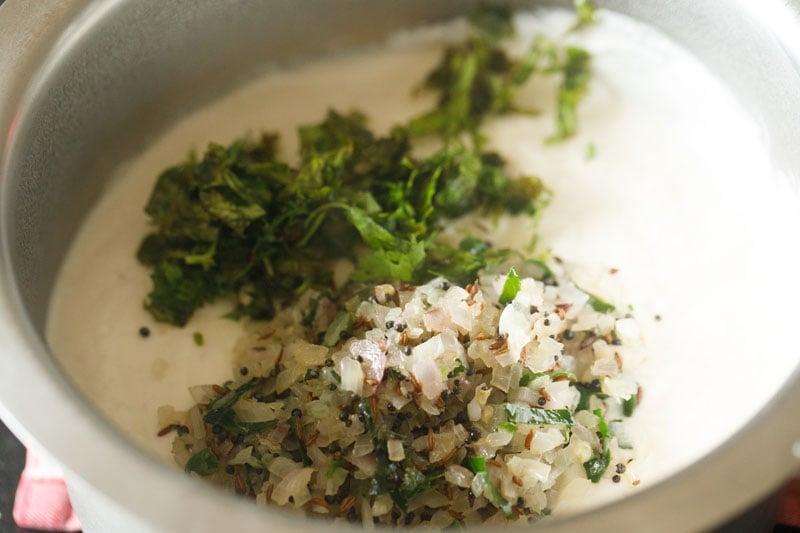
18. Mix thoroughly. The batter is now ready.
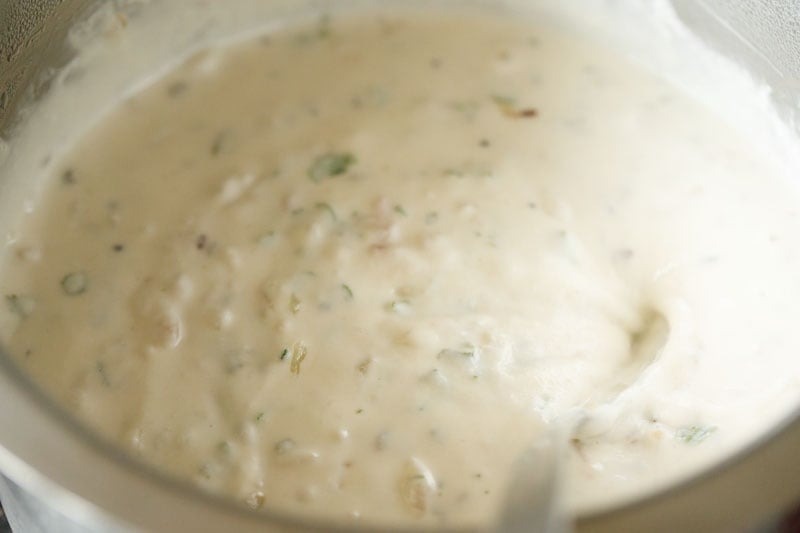
Cook Paddu or Appe
19. Heat the Appe pan. Keep heat to medium-low or medium heat.
Add ¼ to ⅓ teaspoon oil in each mould. You can add less or more oil, as you prefer. Let the oil become a bit hot.

20. With a spoonful of batter, fill the outside moulds first and then the center ones later. The center Appe will cook quickly as the heat source is usually in the center.
Fill the batter to ¾ volume of each mould. That bit of space on the top of the moulds, give room for expansion while the appe cooks.
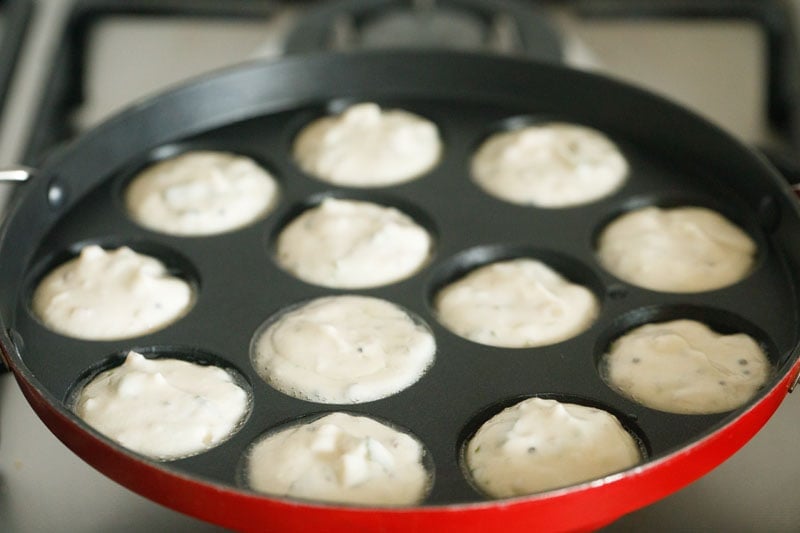
21. Regulate the heat as needed depending on the stovetop burner design and the pan size and thickness.
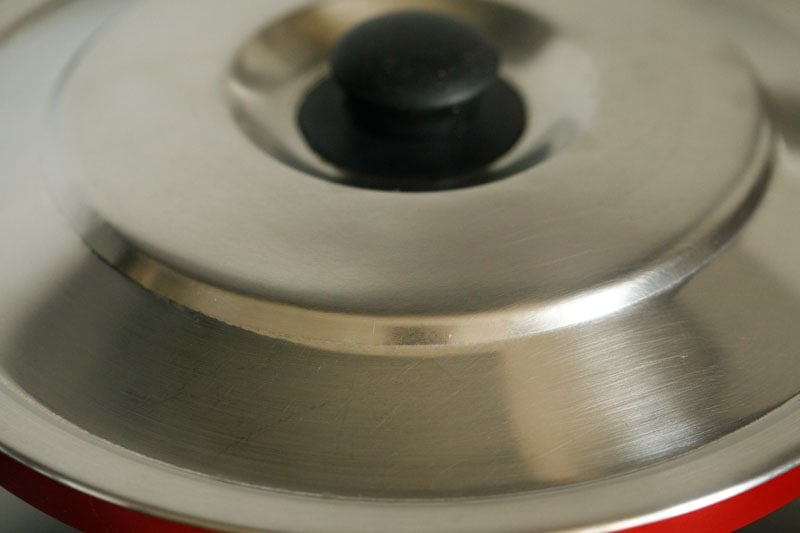
22. Cover with lid and cook until the batter on top looks firm and the base has become crispy and golden.
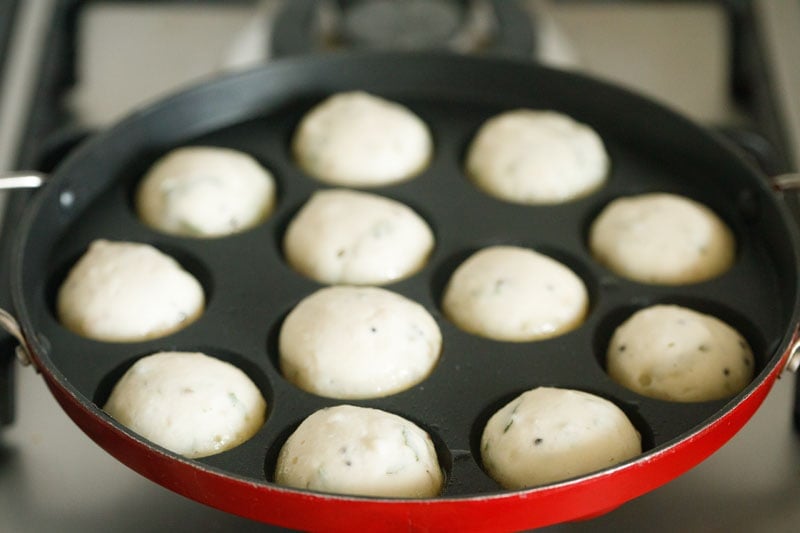
23. Turn over and cook the top side.
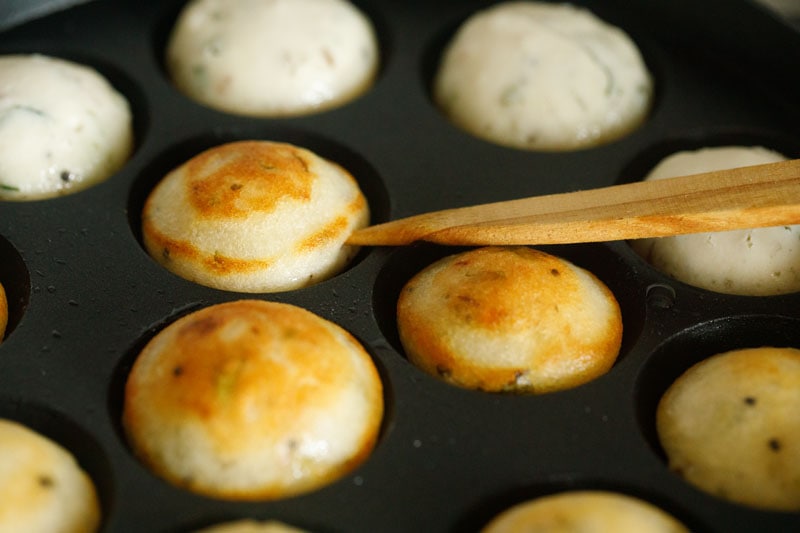
24. Cook each appe until golden. If one of the sides look less golden, then turn over and cook until crispy and more golden.
Similarly, cook the remaining Paddu in batches. Regulate the heat as needed.
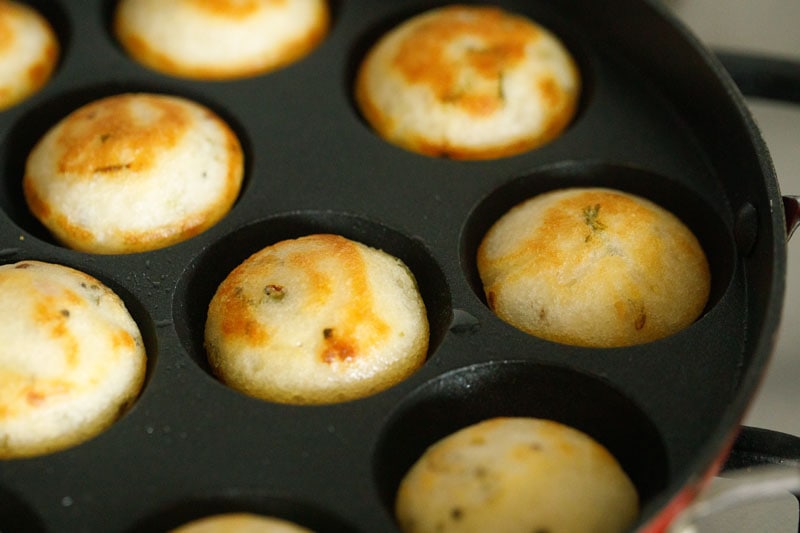
25. Serve Appe or Paddu hot or keep them in a hot pot or casserole so that they stay warm.
Enjoy with a side of Coconut Chutney, Coriander Chutney, Peanut Chutney or Ginger Chutney.

Expert Tips
- It is best to use lentils that are fresh and in their shelf-life while making appe recipe.
- You can use regular white rice (short or medium grained rice), parboiled rice or even idli rice in this paddu recipe. The quantity of water will have to be adjusted while grinding, as per the type of rice you use.
- This appe recipe can also be made with only one type of lentil, that is urad dal. Add about 7 tablespoons of urad dal.
- The flattened rice (poha) added in the recipe results in softer Appe. It can be skipped too.
- Adding 5 to 6 fenugreek seeds to the batter is also an option. Make sure to soak it with the lentils and then grind together.
- The batter has to be medium to medium-thick consistency batter. So, the quantity of water can be adjusted while grinding the rice and lentils.
- According to the room temperature, the time of fermentation will vary.
- You can choose to skip the tempering and prepare Paddu with just the fermented batter as well.
- While cooking, ensure you are filling the outside moulds before the center ones. It is because the center ones will cook faster as the heat is usually concentrated more in the center.
- As per the stove-top burner design, the size and thickness of the pan, the heat has to be regulated.
FAQS
To make the batter, soak lentils and rice separately in water for a few hours. Then, grind the lentils into a medium-thick to medium consistency batter.
Next, drain the soaked rice, rinse the poha and blend together to a smooth fine batter. Add this to the ground lentils batter along with salt, mix well and let the batter ferment for several hours or overnight.
If you wish to, add tempering as well or use the plain batter to make Paddu.
Yes, you can make this dish without the onions.
Ginger, crushed black pepper, red chili powder and turmeric powder are some of the other ingredients that can be added to the batter.
Yes, Appe is considered a relatively healthy dish as it is not deep-fried and uses less oil for cooking. It’s also a good source of carbohydrates and protein due to the rice and lentils in the batter.
More Similar Recipes To Try!
Snacks Recipes
Street Food Recipes
Snacks Recipes
Snacks Recipes
Please be sure to rate the recipe in the recipe card or leave a comment below if you have made it. For more vegetarian inspirations, Sign Up for my emails or follow me on Instagram, Youtube, Facebook, Pinterest or Twitter.
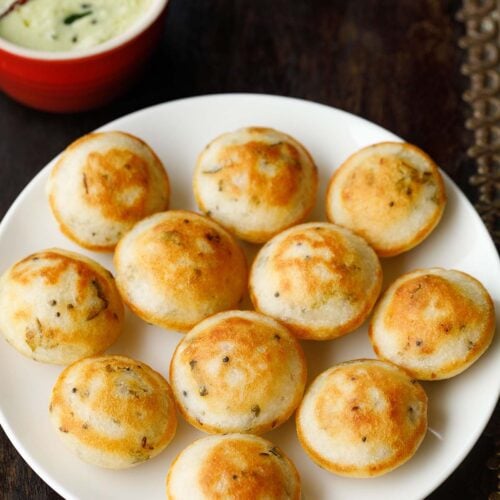
Appe Recipe | Paddu
Appe also known as Paddu are small, fluffy dumplings or pancakes made with a fermented rice and lentil batter, traditionally cooked in a special Appe pan with multiple round moulds in it. You can customize this Appe Recipe by adding other ingredients like vegetables, spices and even make a sweet version of it.
Appe Batter
Tempering Mix
For Frying
Soak Rice, Lentils & Make Batter
First rinse the lentils – urad dal, moong dal and chana dal 3 to 4 times with water. Soak the lentils with ½ cup water in a bowl for 4 hours.
Next rinse the rice 3 to 4 times with water. Soak the rice in 2 cup water for 4 hours.
Before blending or grinding, rinse the poha a few times in water. Drain all the water and set aside.
Drain water from the soaked lentils and rice. Set aside.
Take the soaked lentils in a blender or mixer-grinder. Add ¼ cup water or as needed to make thick or medium-thick batter with a fine consistency.
Transfer the lentil batter to a bowl or pan.
Add the soaked rice and rinsed poha to the same blender or mixer-grinder jar.
Pour ½ cup water and grind or blend the soaked rice grains and poha to a fine grainy batter or to a smooth fine batter.
Transfer the rice and poha batter to the same bowl or pan containing the lentil batter. Add edible rock salt.
Mix both the batters thoroughly. Cover with lid and let the batter ferment for 8 to 9 hours or more as needed.
Remember that the time required for the batter to ferment will depend on the room temperature.
Once the batter has fermented perfectly, you can begin to prepare appe. If you plan not to, keep the fermented batter in the fridge.
Make Tempering
The tempering is optional. You can skip this part and make Appe with the fermented batter.
Heat 1 tablespoon oil in a frying pan.
Keep heat to medium low. Add mustard seeds and let them splutter. When they start spluttering, add cumin seeds and let them crackle.
Add onions, green chillies and curry leaves. Also add asafoetida.
Sauté until onions soften, stirring often. Or you can sauté for 2 to 3 minutes.
Add this tempering mix to the appe batter. Add chopped coriander leaves. Mix thoroughly.
Make Appe
Heat appe pan. Keep heat to medium-low or medium heat.
Add ¼ to ⅓ teaspoon oil or as needed, in each mould. Let the oil become slightly hot.
With spoonful of batter, fill each mould up to ¾ of its volume. Fill the moulds along the circumference first, followed by the center ones.
This is because the center appe cook quickly as the heat source is usually in the center.
Regulate the heat as needed depending on the stovetop burner design and the pan size and thickness.
Cover the appe pan with lid and cook until the batter on top looks firm and the base has become crispy and golden.
Turn over each appe and cook the top side. Now there is no need to cover with lid.
Cook until golden all over. If one of the sides look less golden then turn over again and cook until crispy and more golden.
Remove and serve hot or keep them in a hot pot or casserole so that they stay warm.
Serve with coconut chutney, green coriander chutney, peanut chutney or ginger chutney.
- Make sure to use rice and lentils which are in their shelf period.
- This paddu recipe can also be made with urad dal only. Add about 7 tablespoon of urad dal.
- You could easily use regular white rice (short or medium grained rice) or parboiled rice to make these rice appe.
- The quantity of water may have to be adjusted while grinding, according to the type of rice you use. If you use regular raw rice, you will have to add less water.
- Poha (flattened rice) help to give a more softer texture to the appe, but they can be left out.
- Adding 5 to 6 fenugreek seeds to the batter is also an option. Make sure to soak the seeds with the lentils and then grind together.
- The batter has to be medium to medium-thick consistency batter. So, the quantity of water can be adjusted while grinding the rice and lentils.
- According to the room temperature, the time of fermentation will vary. So keep in mind that the batter can take more or less time to ferment.
- You can easily opt to skip the tempering and prepare Paddu with just the fermented batter. Additionally you can add finely chopped raw onions, green chillies, ginger, cumin seeds, crushed black pepper, asafoetida, curry leaves and coriander leaves.
- Any leftover batter can be refrigerated for 1 to 2 days and used later to make paddu or appe.
- The approximate nutrition info is for 1 appe made from this recipe.
Nutrition Facts
Appe Recipe | Paddu
Amount Per Serving
Calories 48 Calories from Fat 9
% Daily Value*
Fat 1g2%
Saturated Fat 0.1g1%
Polyunsaturated Fat 0.1g
Monounsaturated Fat 1g
Sodium 40mg2%
Potassium 10mg0%
Carbohydrates 7g2%
Fiber 1g4%
Sugar 0.2g0%
Protein 1g2%
Vitamin A 54IU1%
Vitamin B1 (Thiamine) 0.04mg3%
Vitamin B2 (Riboflavin) 0.01mg1%
Vitamin B3 (Niacin) 11mg55%
Vitamin B6 0.02mg1%
Vitamin B12 0.02µg0%
Vitamin C 19mg23%
Vitamin D 0.01µg0%
Vitamin E 1mg7%
Vitamin K 0.2µg0%
Calcium 9mg1%
Vitamin B9 (Folate) 125µg31%
Iron 1mg6%
Magnesium 3mg1%
Phosphorus 8mg1%
Zinc 0.1mg1%
* Percent Daily Values are based on a 2000 calorie diet.


